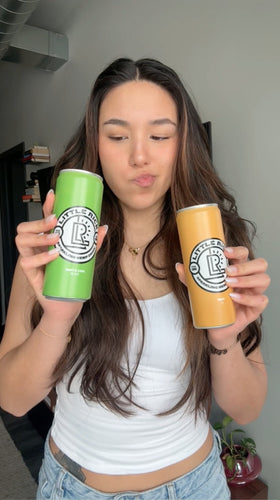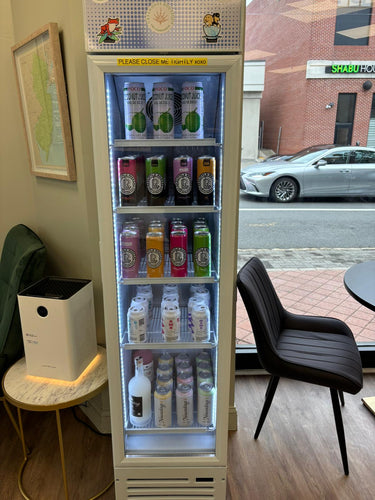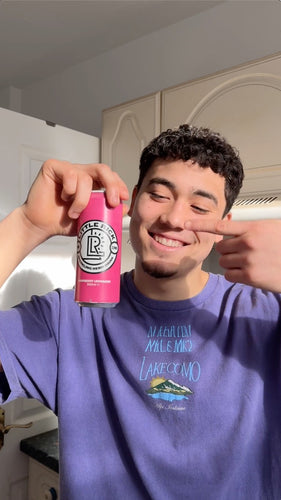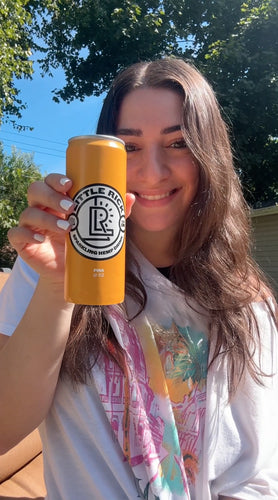A Guide to Cannabinoids and Terpenes
Whether you’ve browsed through shelves of CBD-infused beauty products or you’ve heard reporters debate the legalities surrounding THC in the UK, the chances are that you already have some understanding of cannabinoids.
As the primary compound found in cannabis, THC is the cannabinoid which has attracted the most attention across the globe. However, the conversation surrounding different cannabinoids has escalated in recent years as the benefits of CBD have become discussed worldwide. Despite this, it’s fair to say that many people don’t really understand what cannabinoids are and what they do.
The same is also true for terpenes. Understanding terpenes is important for anyone who purchases or uses cannabinoid-infused products, but it’s still a phenomenon that lots of consumers are yet to grasp an understanding of.
At Little Rick, we’re fascinated by the science behind cannabinoids and terpenes. In fact, it’s this science that has helped us create what we believe to be the most relaxing drink on the planet! That’s why we’ve put together an easy-to-understand guide to cannabinoids and terpenes, including the definitions, differences and effects of each.
What are cannabinoids?
First up - what are cannabinoids? Put simply, these are the compounds found within cannabis plants. To date, 113 cannabinoids have been identified within the cannabis plant, including the well-known tetrahydrocannabinol (THC), cannabidiol (CBD) and cannabigerol (CBG).
To truly understand what cannabinoids are, we first need to have an understanding of what’s going on in our body. So, what do we know?
Cannabinoids and the body
Within the human brain, we have something called an endocannabinoid system (ECS). Our endocannabinoid system is known to play a role in the way we sleep, eat and regulate moods and emotions, alongside a whole host of other processes.
There are three elements that allow the endocannabinoid system to function this way:
- Endocannabinoids: These are naturally occurring neurotransmitters produced by your body to assist with the functioning of your internal systems.
- Endocannabinoid receptors: When endocannabinoids identify that your body needs help regulating a physiological process, such as feeling pain, it produces the volume of endocannabinoids needed to do so. These endocannabinoids then bind to receptors to alert them to the instability within the body.
- Enzymes: Once the endocannabinoids have performed what they were produced to do, they are then broken down by the endocannabinoid system’s enzymes.
When cannabinoids such as THC and CBD interact with the endocannabinoid system, they can cause your body to experience different effects. The effects vary depending on the cannabinoid and how it interacts with the receptors, which is why we wouldn’t feel the same after THC was absorbed into our bloodstream as we would with CBD.
Why does this happen and what effects can cannabinoids have?
What are the effects of cannabinoids?
As we’ve mentioned, cannabinoids have different effects on the body depending on how they interact with the endocannabinoid system. These effects change how different cannabinoids are used and perceived in today’s society; THC is a psychoactive cannabinoid with mind-altering effects while CBD is associated with helping people feel calm and relaxed.
Why does THC have mind-altering effects?
This is due to the fact that THC mimics the body’s naturally occurring endocannabinoids when it enters the bloodstream. Like endocannabinoids, it attaches to the system’s receptors and causes an imbalance.
The endocannabinoids within the brain are effectively thrown off course, which can have varying effects on the processes the ECS helps to regulate. This is why people report intense feelings of happiness, distorted thinking, higher levels of pain relief, memory loss and an increase in appetite after consuming THC. This is typically known as feeling ‘high’.
What effects does CBD have?
Unlike THC, ingesting CBD will not cause you to feel high or euphoric. This is because CBD does not bind to the ECS’s receptors to cause mind-altering effects, as THC does. Instead, CBD appears to block the enzymes in the ECS from breaking down the endocannabinoids responsible for regulating pain sensitivity, moods and so on.
By preventing them from breaking down, the endocannabinoids can continue to regulate these processes; this has been associated with pain relief, anxiety relief and improved sleep quality. For this reason, CBD-infused products have exploded in popularity in recent years, as more and more people look for ways to unwind after particularly stressful days at work and study.
As CBD-infused products have become increasingly popular, conversations surrounding terpenes - especially those found in cannabidiol and other cannabinoids - have also increased. But, what are terpenes and what do they have to do with cannabinoids?
What are terpenes?
While you may not have heard of terpenes before, they actually play a huge role in the production of many foods and beauty products. This is due to the fact that terpenes are organic molecules produced by plants and known for their distinctive scents and fragrances.
Put simply, they are the compounds which give particular plants their great smell, such as the zesty smell of oranges produced by limonene and the beautiful smell of lavender produced by linalool. Terpenes are also responsible for giving different hemp strains their aroma, but that’s not all!
There are over 100 terpenes in the cannabis plant, many of which have been found to have varying effects on the human body. Some of the primary terpenes found in hemp strains include:
Linalool: Many hemp strains contain linalool, which is the terpene responsible for giving lavender its relaxing effect.
Myrcene: This terpene is found in thyme, mango and cardamom, and offers many anti-inflammatory and anti-bacterial properties.
Pinene: Responsible for giving pine trees their distinctive aroma, the pinene terpene is also known to be anti-inflammatory and anti-bacterial.
Humulene: The humulene terpene is found in coriander and hops and is responsible for their distinctively earthy smell. One of the main qualities of this terpene is that it can suppress appetite.
Limonene: Found in citrus fruits, limonene can help to relieve stress and anxiety. It has also been used to treat bronchitis.
Caryophyllene: This terpene is found in rosemary, hops and cloves and can help to relieve feelings of anxiety and sleeplessness.
As terpenes have different fragrances and effects on the human body, the hemp strains in which they appear can be selected and used to offer a different experience to consumers.
In fact, research suggests that the terpenes found in particular strains of the cannabis plant can mitigate and increase the effect of some cannabinoids. This is referred to as the entourage effect.
The entourage effect
The entourage effect is the idea that certain cannabinoids react with the terpenes in the cannabis plant to mitigate the mind-altering effects caused by THC, which is a psychoactive compound.
This would suggest that using the entire cannabis plant is more beneficial than isolating separate components, as the other cannabinoids and terpenes within the plant can ease some of the negative effects of consuming cannabis, such as feelings of paranoia and anxiety.
In particular, research suggests that CBD is highly effective at mitigating the effects of THC, especially when combined with terpenes that enhance its natural qualities. The applications of this research could be revolutionary, especially within the field of cannabinoids for medicinal purposes.
Over the past few years, the benefits of CBD have become clearer. However, understanding the impact of terpenes on cannabinoids is also imperative in order to benefit from CBD’s therapeutic effects. The future of CBD is set to be a fascinating one, and is one that we at Little Rick are proud to be a part of!
Little Rick: Cannabinoid-infused drinks with a twist
There’s no denying that cannabinoid-infused products are on the rise, and we at Little Rick are pretty confident that our sparkling drinks are up there with the best on the market. We know just how beneficial CBD and other cannabinoids can be, which is why we’ve created a way of packing them into a tantalisingly tasty selection of drinks.
Our cocktail-inspired drinks are produced with fresh and fruity ingredients to give them a flavoursome twist and are infused with cannabidiol (CBD), cannabichromene (CBC) and cannabigerol (CBG) to help you wind down after a busy day.
If there’s nothing you fancy more than curling up on the sofa after a hectic day at the office, Little Rick drinks are here for you. Available in Mint & Lime, Raspberry Coconut or Piña, these beverages are designed to mimic alcohol without the calories, sugar or hangover. What could be better?
Ready for your first taste of Little Rick? Get your hands on our range of cannabinoid-infused drinks today by browsing our online shop.







